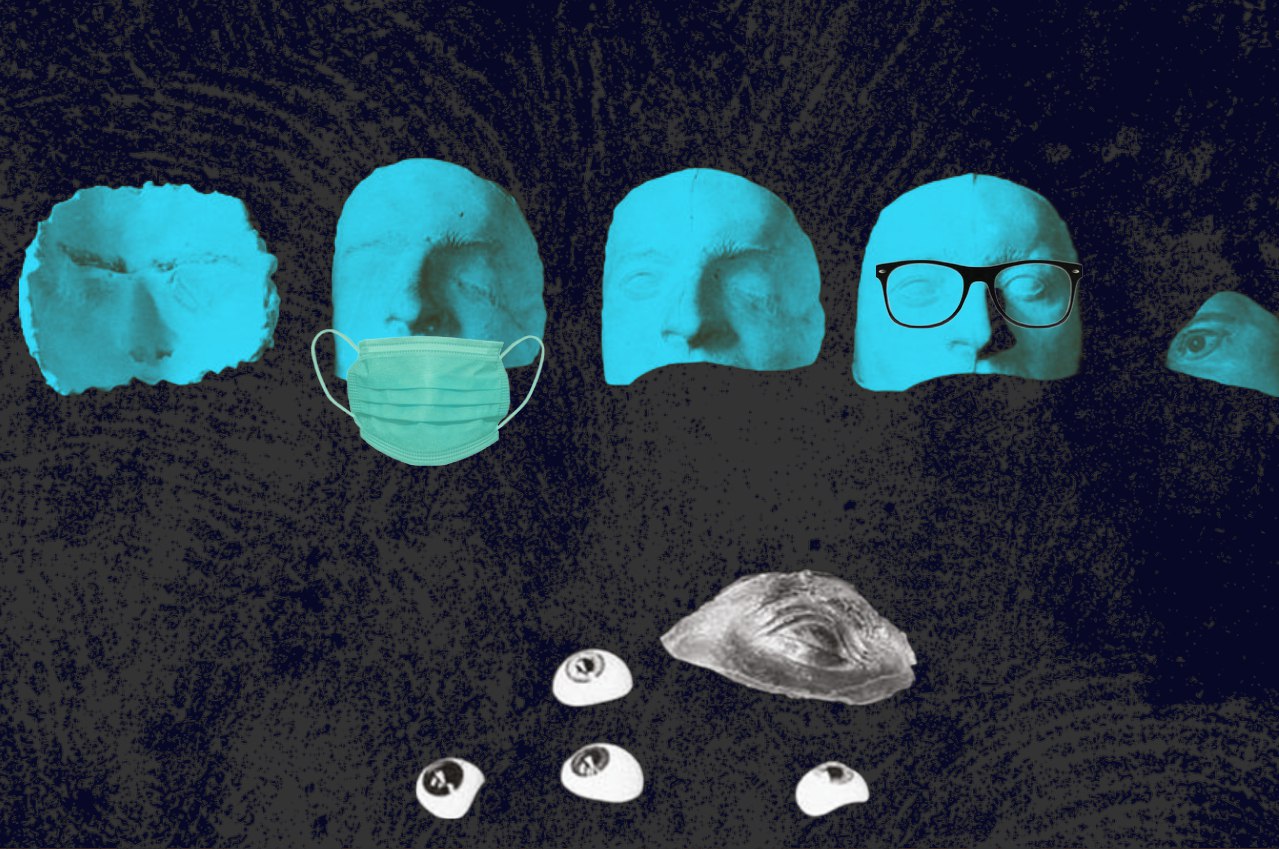The delivery went well, but the doctors didn’t take the baby back to the mother as expected. The father was frightened. He went to find out what had happened, but no one would tell him anything. After much insistence, which resulted in a heated argument with one of the hospital security guards, he was finally allowed access to his newborn child. Before, however, the obstetrician announced: “We’re not sure what to do—the boy was born with no face.”
The parents discovered, a few days later, that there was an opening extending from the baby’s upper lip to the nose through the roof of the mouth—in medical terms, cleft lip and palate, a congenital anomaly that occurs in the embryonic period, up to the 12th week of pregnancy. Thyago, now a lawyer and interlocutor of the research I am developing, had a face. A face that, after more than 10 surgeries performed over two decades of treatment, has a small scar. This true story, which took place in the mid-1980s in a hospital in São Paulo, is still re-enacted in present days. There are many medical professionals who, like most lay people, do not know how to act when faced with faces that cross the border of what we consider normal.
As in the case of the doctor who was unable to name the baby’s condition, the vast field of textual and image information available to us does not seem to be enough to talk about the face. It escapes us at the same time it constrains us. Disability studies theorist Garland-Thomson says the face is an epistemological problem that can only be resolved through analogies. Daniel Black, a thinker in the field of communication, describes the face as an anatomical and perceptive phenomenon, the most unstable and illusory part of the human body. The human face is that which forever surpasses efforts to capture it or establish a generalized vision of its reality. Recognizing the face of someone we love or cherish, for Black, is not just about the combination of shapes, but also about the feelings their faces communicate to us. This ability to read faces, of course, is informed by our assumptions and prejudices.
But what makes the face one of the body’s main points of reference? Why does it largely concentrate one’s identity markers and means of communication with their surroundings? These are questions that still elude me, and for which there are no exact answers. However, there’s an approach that helps me to think about these issues in a more “organized” way: the idea that the face spreads. An example of this is that we often take the face for the individual, and the individual for the face. The face seems to emanate to the rest of the body and beyond. Whether through the senses—sight, hearing, touch, and smell—or through speech and expressions, the face does not end in itself.
We could also ask ourselves: what is a face? Well, there are fourteen individual bones that together form parts of the digestive, respiratory, visual, and olfactory systems. A set from which we infer someone’s gender, age, ethnicity, and social class. However, whereas a person’s face is one of the greatest expressions of our humanity, as the anthropologist David Le Breton says, it can also be altered. Like a canvas, it allows the viewer to capture what the body insists on laying bare—feelings and emotions which we cannot suppress or mask—thus, it is also the target of massive interventions whose objective is, above all, to adjust its shape, such as plastic surgery.
It is currently accepted among biologists that the human face is a combination of biomechanical, physiological, and social influences. The face begins to develop around the twenty-fourth day in the embryonic stage. Specialized pluripotent cells, called cranial neural crest cells, are primarily responsible for the facial skeleton whose development occurs concomitantly and interdependently with the skull. In fact, that’s when a fetus can develop cleft palate and lip.
While studying a little about facial embryology, in order to better understand Thyago’s case and those of other research interlocutors, I came across the following term: facial process. As a layperson, I was dazzled by the images of what I understood to be the nose, mouth, eyes. For embryology, however, the correct terminology was “frontonasal prominence process,” “maxillary prominence process,” etc. Certainly, at a certain point in pregnancy and especially after birth, these “processes” are no longer seen as such and are named as the parts we usually know. However, what caught my attention was that the face itself, even in biological terms, is not “ready.” Either because it is still at an embryonic stage, or because we’re not born with a fully grown set of teeth, or because our eyes, ears and nose are still developing. Additionally, if we turn a careful look at the face—and this applies to the rest of the body—we will see that even after adulthood it is not “finished.” Throughout life these “facial processes” are quite evident, especially as we grow older. Still, we assume one’s face as something solid and finished, and we’re stunned when we realize how little agency we have with regard to these changes. For Gilman, historian of science, intervening in the body through surgery and other technologies would be connected to this fear. A way for us to take control not just of the physical body, but everything it represents. In the case of the face, this means what we are as individuals, our character and personality.
Whether through beautifying and repair technologies or to accompany physiological processes conceived as more natural, our faces are constantly in the process of being made. Even though these are phenomena that have always accompanied us, the face and the ways in which we modify it—or how we try to interrupt its transformations—are still understudied. It is important to say that technologies such as plastic surgery, despite being seen as new, have existed since ancient times. It was only in the 16th century and as a result of the syphilis epidemic, however, that these surgeries began to be performed more frequently. At that time called decorative surgery, these procedures were meant to rebuild the noses of people affected by an advanced stage of the disease.
In the 19th and 20th centuries, with the Crimean War (1853-1856) and the First (1914-1918) and the Second World War (1939-1945), there was a great increase in surgical techniques. Due to the huge number of victims with mutilated and burnt faces and bodies, methods of reconstruction became increasingly specialized. Plastic surgery then began to move away from the stigma that associated it only with the illnesses resulting from syphilis and began to represent an area of medicine dealing with those who serve the nation, gradually becoming respectable in terms of profession.
In Brazil, the second country in number of plastic surgery procedures in the world, Renato Kehl was a prominent figure. The doctor and eugenicist (1889-1974), long before internationally renowned Ivo Pitanguy, stood out for attributing a role to plastic surgery that went beyond mere aesthetics. For Kehl, diets, genetics, and plastic surgery were crucial ingredients for the “cure of the ugliness” of Brazilian people. Yes, exactly that—according to the doctor, the Brazilian population was too degenerate, and corrective procedures for “malformations” were essencial not only for individuals, but for the whole nation. He believed that cosmetic surgeries should be not only carried out in rare cases but as a continuous and comprehensive policy.
The relationship between the sciences that study and intervene in the face with eugenics and racism is even broader still. There have been many different approaches taking facial features as indicators of one’s personality and character. These all assumed the outside as a revelation of inside: criminology allied to craniometry—whose main representative is Italian surgeon Cesare Lombroso (1835-1909)—and physiognomy, an enterprise originated in India and alluded to certain biblical passages. Indeed, since Pythagoras (570 BC – 490 BC) and even much earlier—still to this day—there has been this enduring idea that one’s face spreads. This perspective helps us to understand a little about how science has often conceived the face as a clear, and often irrefutable, mirror of the individual—a profoundly dangerous notion, with tense implications. It was once believed that operating on the faces of people considered too ugly could help reduce crime. Different oppressive political projects relied on claiming that the “Jewish nose” or the “Black nose” needed repairing. Conversely, these are the same surgeries—it’s worth pointing out—that have long enabled people born with cleft lip and palate to speak, eat and breathe with quality of life, and feel comfortable with the aesthetics of their own face.
In a conversation we had in May 2020, André, a research interlocutor who, like Thyago, was born with cleft lip and palate, told me this: “People see this scar ", pointing to the region between the upper lip and the base of the nose, “ and transport it across your entire body.” He was referring to the discrimination he’s faced, such as how he often got treated in job interviews, the workplace, and in school for having a mark on his face and speaking slightly through the nose. Again we see how someone’s face and its markers can be taken as the whole individual.
Racist, ableist, and even eugenicist assumptions of what a face should look like to be considered beautiful or even normal and acceptable have long shaped our understanding of what a face is or what it should be like. This does not mean, however, that we should discredit the sciences and doctors or treat all facial intervention procedures as perverse technologies. That’s not the point I’m trying to make. However, just as the face is ever a work in progress, ongoing even much after the fixed maturation we assume to take place in adulthood, so are the disciplines that deal with the face—in fact, science in general. As many anthropologists and philosophers of science have insisted, scientists in all different fields must periodically question ourselves about the questions that move them, and the ideas that inform them. It’s imperative to make this unfinished nature more and more evident. Lest we run the risk of generating dead knowledge in a society that does not value the diversity of life.
References
BLACK, Daniel. What is a face?. Body & Society, v. 17, n. 4, p. 1-25, 2011.
DAVIS, Kathy. Reshaping The Female Body: the dilemma of cosmetic surgery. New York: Ed. Routledge, 1995.
GARLAND-THOMSON, Rosemarie, Staring: How we look. Oxford University Press, 2009.
- GILMAN, Sander. Making the Body Beautiful: A Cultural History of Aesthetic Surgery. Princeton: Princeton University Press. 2001.
KEHL, Renato. A cura da fealdade: eugenia e medicina social. São Paulo: Monteiro Lobato & Co-Editores, 1923.
LACRUZ, Rodrigo S. et al. The evolutionary history of the human face. Nature ecology & evolution, v. 3, n. 5, p. 726-736, 2019.
M’CHAREK, Amade. Tentacular Faces: race and the return of the phenotype in forensic identification. American Anthropologist, [S.L.], v. 122, n. 2, p. 369-380, 6 maio 2020. Wiley.
Credits
© [teksomolika] / Adobe Stock

